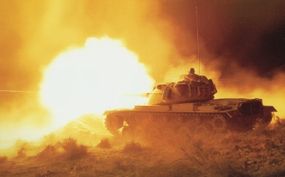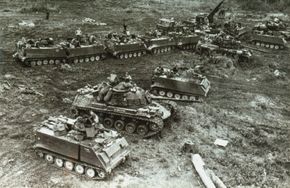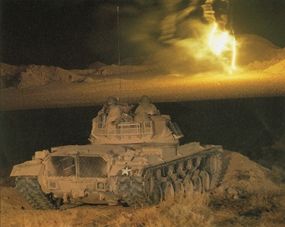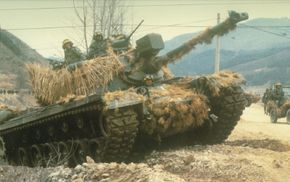In the beginning, the M-48 General George S. Patton Medium Tank was a hard luck tank. When the Korean War began in June 1950, the United States had only the obsolete M-4 Sherman Medium Tank in inventory and no newer medium tank in production.
An interim medium tank, the M-47 General George S. Patton Medium Tank, was rushed into production and then to Korea. But the M-47's performance was not considered satisfactory in the face of the new Soviet medium tank, the T-54, that was then entering service.
Advertisement
Tank Image Gallery
In 1950 the Detroit Tank Arsenal and the Chrysler Corporation were each awarded contracts to develop a new medium tank armed with a 90mm gun. They were told to do so as quickly as possible. The new tank was given the developmental designation T-48, based on the earlier T-42.
Design work began in December and was completed one year later. Even before the first prototypes were finished in March 1952, production contracts were awarded to Fisher Body Division of General Motors and to the Ford Motor Company. The first M-48 tank came off the assembly line in July 1952.
The Cold War, begun in earnest with the Berlin Blockade in 1948, gave every appearance of turning hot in the early 1950s. The fall of Nationalist China, the disappearance of eastern European countries behind the Iron Curtain, communist insurgencies in Malaya and the Philippines, and the invasion of South Korea by North Korea had many military planners convinced that war with the Soviet Union was only a matter of months away.

In the U.S. Army's haste to get the M-48 into production, problems were overlooked or ignored. Many of the problems came back to haunt the tank and its crews, earning the M-48 a reputation as a badly designed tank.
Virtually all the early models had to be rebuilt to later configurations. Once this was accomplished, most complaints and problems faded away. But problems or no, the Army had accomplished its purpose. The M-48 was a tank fully capable of standing up to the T-54 series of Soviet tanks.
The M-48 had a cast-and-welded hull with an escape hatch built into the floor. The turret was a one-piece casting, the front wall of which was 4.3 inches thick.
The usual hull-mounted machine gun was eliminated in favor of more ammunition storage for the main gun. This also allowed the driver to be seated in the center front of the hull.
For more on the M-48 General George S. Patton Medium Tank's equipment, continue to the next page.
To learn more about historical tanks, check out:
- Historic Tank Profiles
- How M1 Tanks Work
- How the U.S. Army Works
- How the U.S. Marines Work
Advertisement



